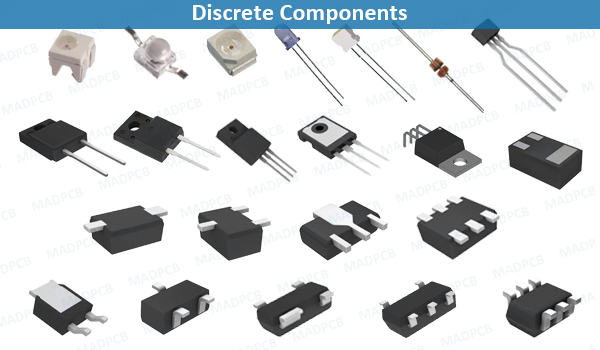Discrete Components are (electronics) components with just one circuit element, either passive (resistor, capacitor, induct) or active (transistor or vacuum tube). They are in simple package, usually designed to be soldered to a printed circuit board. Two forms of such component packages are generally used:
- Through-hole designs (type TO220), which must be fixed to a circuit board through holes.
- Surface-mounted devices (SMDs), which are fixed onto a circuit board, using glue where necessary. And the pins are soldered onto the copper pads on the surface of the circuit.
Before the advent of integrated circuits (chips), all transistors, resistors, capacitors and diodes were discrete. Discrete components are widely used in amplifiers and other electronic products that use large amounts of current. On a circuit board, they are intermingled with the chips, and there is hardly any electronic product that does not have at least one or two discrete resistors or capacitors. Discrete components like the following:
- Capacitors (ceramic, electrolytic, tantalum)
- Fuses
- Resistors
- Transistors (MOSFET, BJT, JFET)
- Inductors
- Switches
- Motors
The latter technique is becoming increasingly widespread, as it makes efficient heat dissipation possible via the ground plane layer(s) of circuit boards and improves the productivity of circuit board assembly lines (SMD components are quicker to place than through-hole designs using automated methods), thus reducing production costs. They are also used in specialist circuits using a metallic substrate. In this case, the printed copper circuit is insulated from the metal base using a layer of insulating material, which is either organic or obtained using a metal oxide (alumina). This technique is similar to that used in the power modules presented in the next section. Refer to Active Components and Passive Components.

